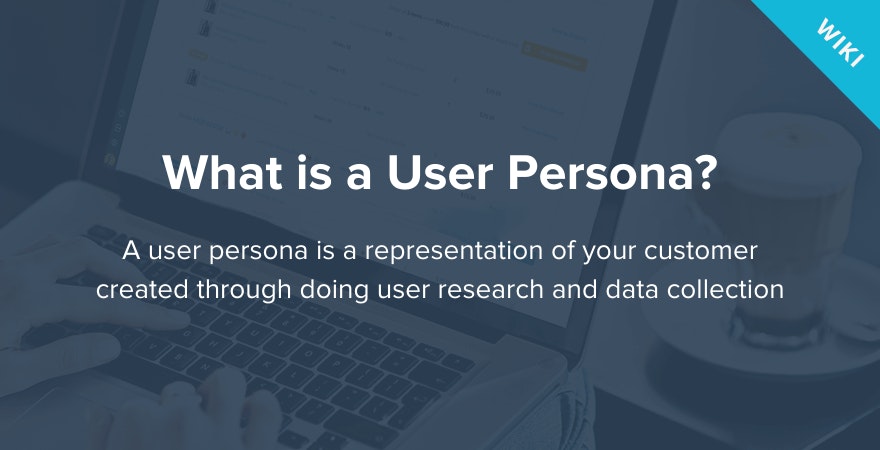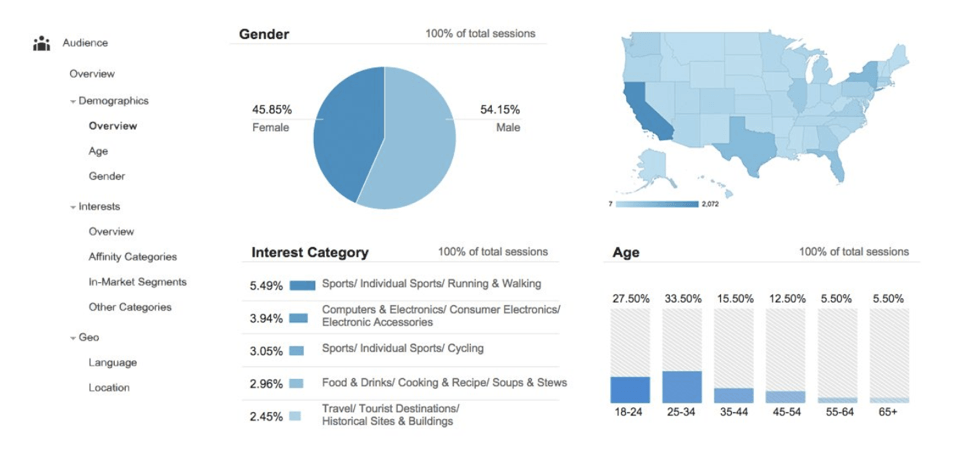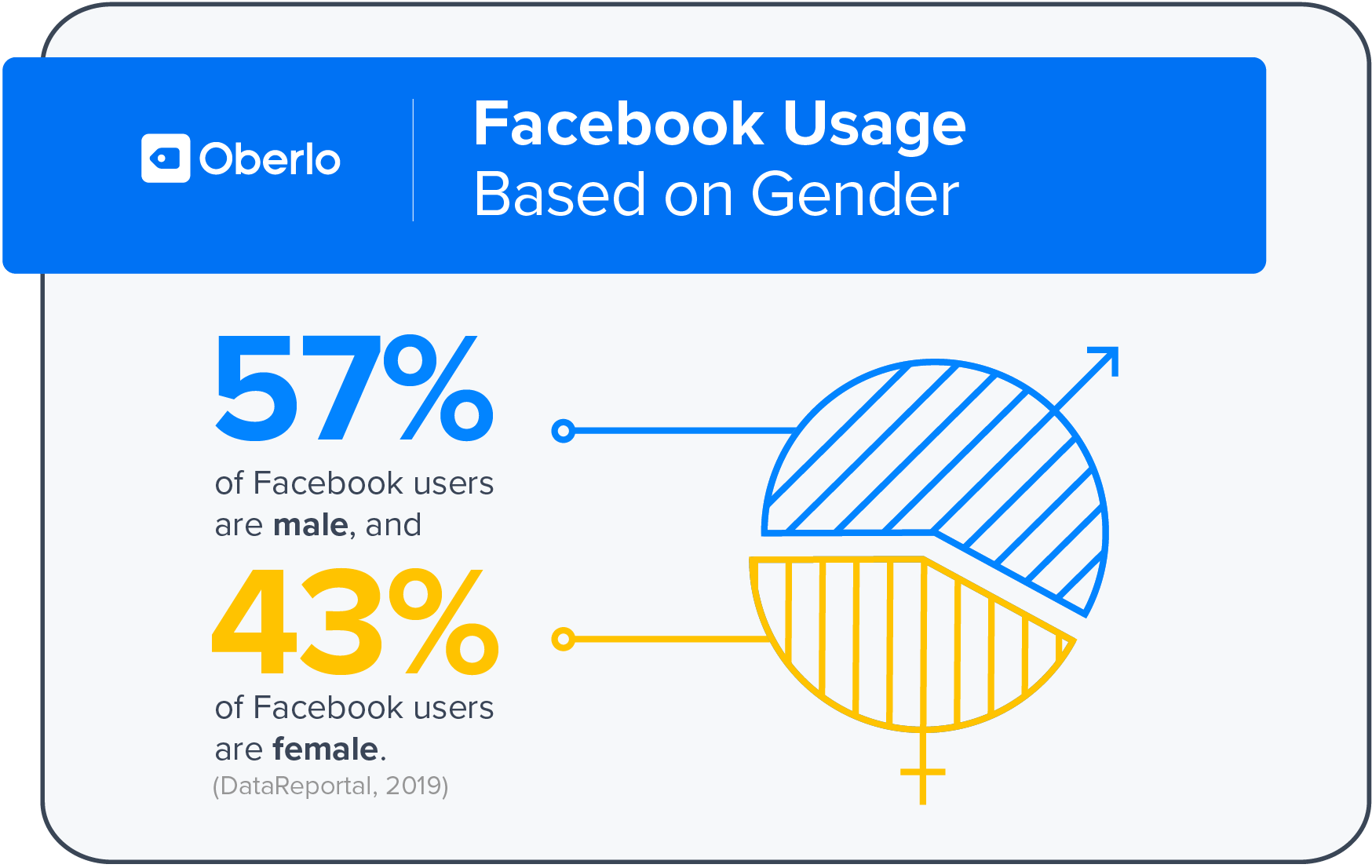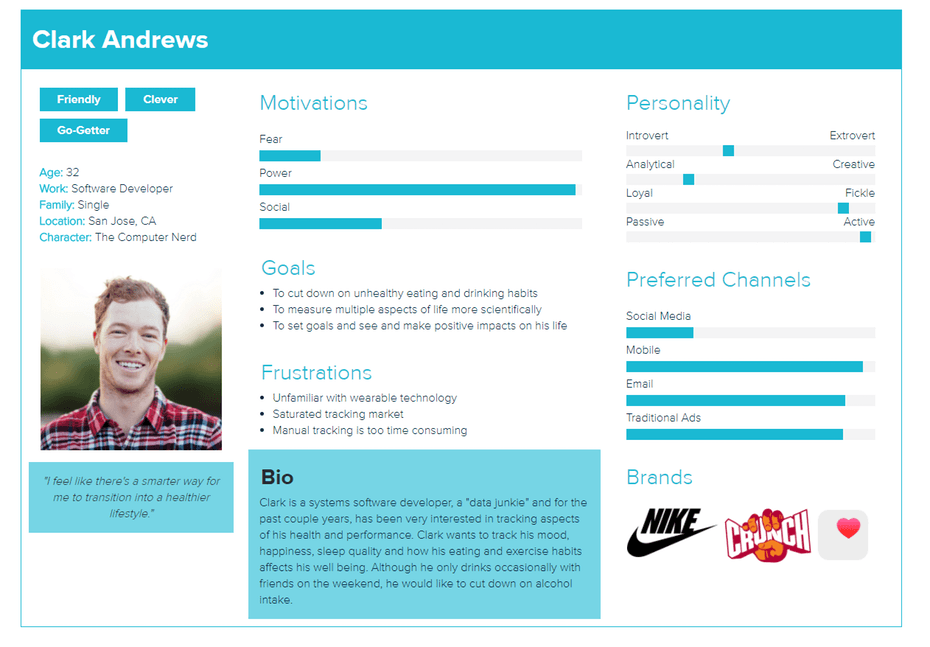
User Persona



What is a User Persona?
A user persona is a representation of your customer. Through user research, and collecting online data you can discover what your ideal customers have in common, like salary, aspirations, needs, etc. Once you have a good idea of these attributes, you can start to build your user persona which will embody them.
Why Do Marketers Need User Personas?
User personas create empathy towards your customer and highlights what products they need or want to make their lives easier. User personas allow marketers to understand their target audience a lot better so they can create campaigns that are relevant and relatable to their target market.
→ Click Here to Launch Your Online Business with Shopify
Benefits of User Personas
As we mentioned above user personas allow companies to feel empathy towards their customers which is important when creating and selling products. But, there are so many other benefits to incorporating user personas into your product development, marketing, and sales processes.
Benefits include:
- Highlighting Issues: Doing user research and creating user personas can highlight problems customers may have when using your product. Maybe the interface is not intuitive enough, or the display is too small. Feedback like this can greatly improve your product for future customers.
- Identifying Solutions: Empathizing with your customers can help to identify additional solutions that your product could potentially provide for your customers. These could be new features or upselling add-on products, but they should provide more value for your customer.
- Gaps in Knowledge: Talking with customers and understanding why they buy your product can help you to grasp the real value of your product. It can also open your eyes to aspects of your customers, or your industry, that you didn’t know about. Certainly, if you spend many years in the industry, things change and it can be hard to keep up with everything.
- Showing Motivations: It can be hard to really understand why a customer makes the decision to choose your company over a competitor. This is especially true when your product offering and pricing are so similar. Building a user persona can show you why customers choose you over another business so you can build out your USP further.
- Promotional Opportunities: Customers can be harsh when it comes to feedback but they also offer amazing insight into the true usage of your product or service. When you truly understand your user you can come up with creative messaging and promotional campaigns that will catch their eye. For example, using imagery or idioms to show that you understand what captivates your audience.
How to Create a User Persona
Creating a user persona has different steps involved to ensure that information is gathered and interpreted in the correct way. Each step has its importance and shouldn’t be rushed. Once you have completed each step you will have created a fully-fledged user persona that your company can leverage for success.
Step 1: Gather Your Data
Put a list together of all the possible ways you can gather information about your customers. Now list out the level of work needed to pull meaningful information from these systems. Some systems require some time to pull reports; others require more effort to organize.
Can you collect demographic information from Google Analytics or your sales system? Does your email subscription require customers to list the types of products they are interested in? Are your customers open to joining focus groups or user interviews, in order to give one on one feedback? All of these data points are important, in order to gather information about your users that you couldn’t get anywhere else.

Step 2: Identify What Customers Have in Common
Once you have gathered all your user information you can start to build out common traits that they have. It is important to draw a line between what is a trend across all customers and what a subset might have in common.
For instance, as an online pet store, you may have 5,000 customers. 2,000 prefer buying dog food online, whereas 3,500 prefer having a dog as a pet over a cat. Although 2,000 customers is a large portion, it only makes up 40% of your customer base so it cannot be seen as a trend. Alternatively, 70% of your customers prefer dogs to cats so this trend is more important to note.
Step 3: Create a Persona
Next, you need to create the actual user persona, populating it with all the important information you have just found out. You may have discovered new things about your customers that can change the way you do business so it is crucial that you highlight these things within the persona so they are taken into account in the future.
Elements of a User Persona:
In order for a user persona to provide as much insight as possible the following elements should be present.
- Name and Photo – Giving your persona a name and photo humanizes them and makes it easy to feel empathy towards them.
- User Persona Description – Writing a brief 200-500 word description of the persona is important. Who are they, where do they work, what do they do in their free time – these little snippets of information helps to highlight that your customer is a human who visits your online store.
- Customer Problems – List out the problems that your customers have that would lead them to your online store. Maybe even include one or two queries they would search for when trying to alleviate their problems online.
- Product Solutions – Every problem has a few solutions so you need to highlight why customers choose your solution over other ones accordingly to your user research. If your customer chooses to buy yoga material from your online store to alleviate their back pain, why did they choose this over buying a cream, or going to a brick and mortar store to buy materials? This information is hugely relevant to your business.
- Online and Offline Behavior – Sometimes it is good to list where your customers ‘ hang out’ to understand their behavior. Maybe your customers visit forums to talk regularly about their issues. Or your customers could be secretive and choose to limit their screen time. In both cases, it is good to know what your customer enjoys so that you can target their platforms instead of spending time and money reaching out over many different platforms to no avail.
- Customer Demographics – Identifying your user personas demographic, and perhaps their psychographic, information can help your company to decide on product pricing, promotion, packaging, and so much more. Overlooking this aspect of a user persona can mean misunderstanding your customers completely.

For instance, you may assume that your customers are high earners who have yet to start a family. This means they have lots of disposable cash. Realistically you can raise the price of your product because of this belief, and your customers can afford this price increase. But after doing user research you learn that the majority of your customers are associate level and planning to start their family very soon. This changes things from your business’ perspective as your pricing may need to be revisited in order to see more success in the future.
- Motivation to Buy – Finally, you need to understand why a customer would choose to spend money with you, over another business. Is your customer brand-savvy? Do they care about what the product looks like? Are they concerned about the materials the product is made from? These motivations are so important to know about as they identify where you should be placing your efforts from a product development and marketing point of view.
Step 4: Distribute Across the Business
Finally, once your user persona has been created, you need to distribute it across the whole business. Every department should understand who their main customer is. From customer service to product development, to sales and marketing everyone should feel empathy towards your customer and your user persona will help to achieve this.
Best Practices for User Personas
Creating user personas can be a lengthy process. Between user interviews, and sifting through data, it can be easy to get lost in the whole process. But the process is important as it makes you more defined than your competitors.
Five best practices for user personas are:
- Talk to real people
- Look at all the data not just snapshots
- Link aspects of your persona to a feature of your product
- Don’t be afraid to talk to existing customers
- Ask the hard questions that might not give a positive answer
If you follow these five best practices you are guaranteed to gather invaluable information about your user persona that you would get nowhere else.
Differences Between a User and Buyer Persona
From a corporate point of view, a buyer and user persona can be very different things. A buyer persona could be someone in purchasing who makes the decision to purchase new equipment for the company which they will never use themselves. On the other hand, a user persona from the corporate standpoint is the end-user who will use the equipment.
These two people are very different but these differences are important to know especially when creating collateral to promote your product.



